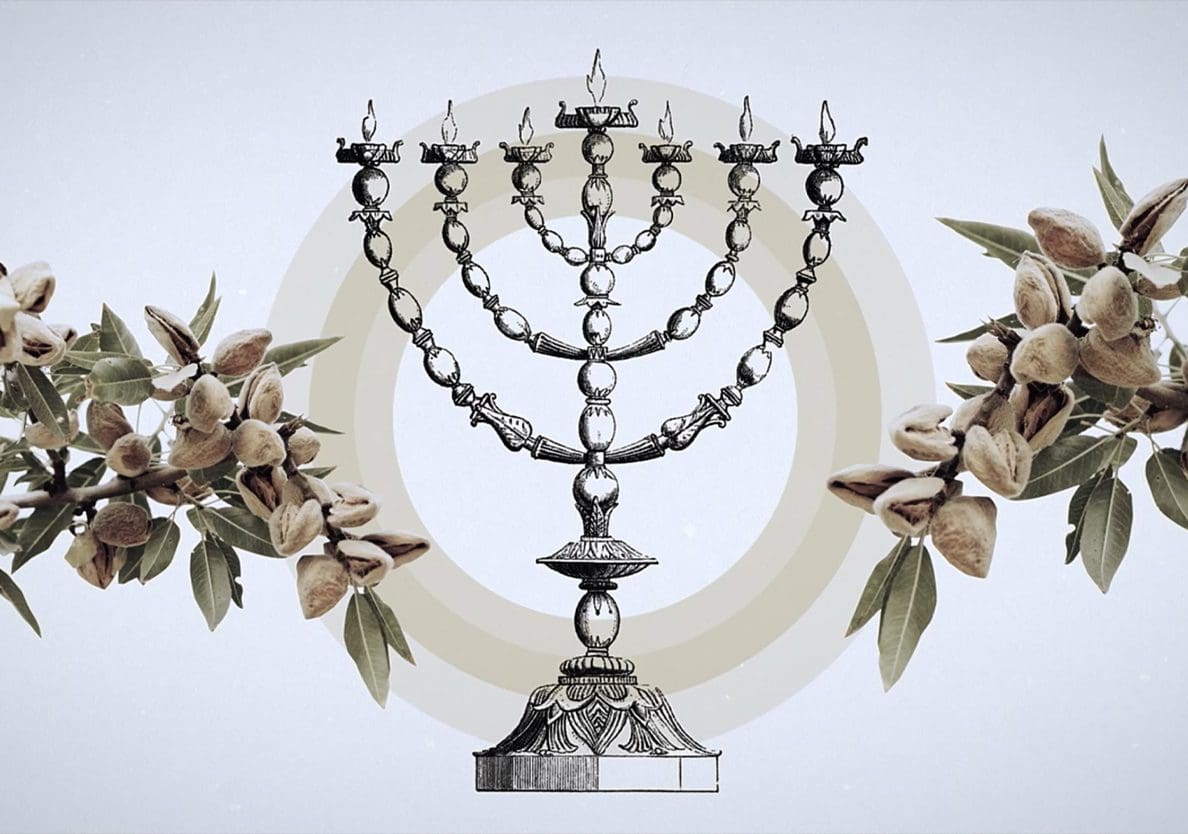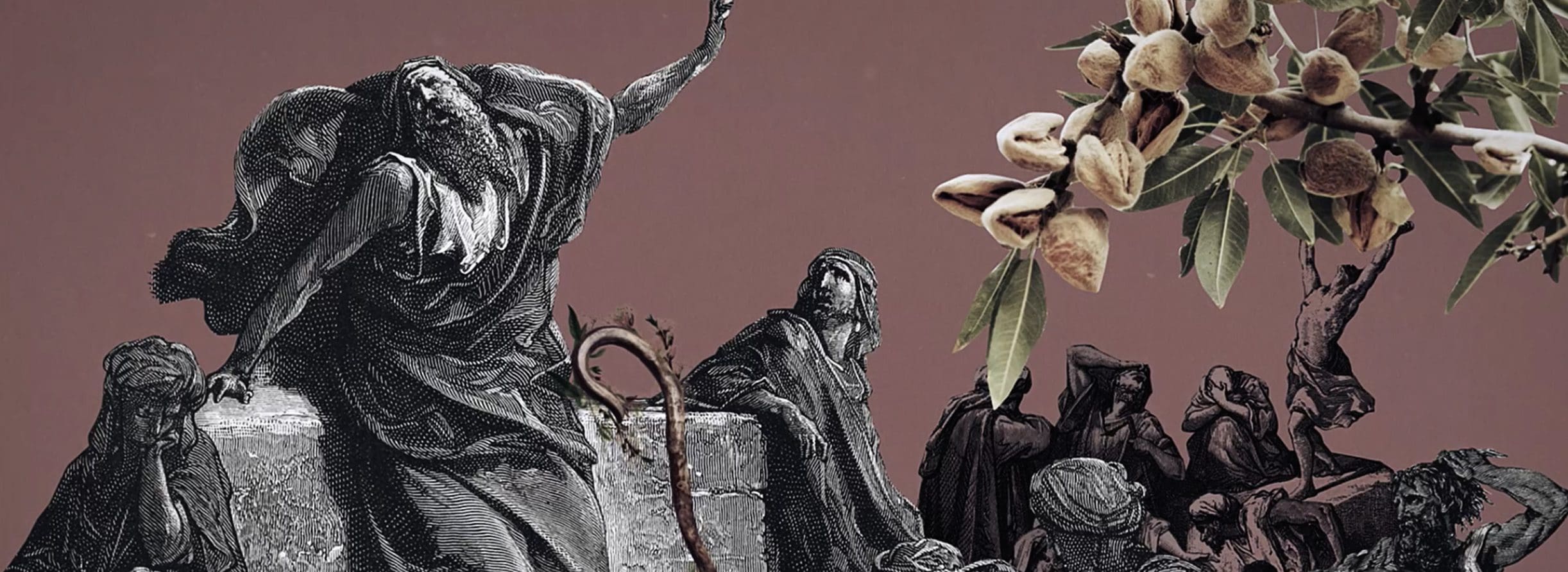Almonds and the almond tree became an important symbol for Israel very early on in the nation’s development. After the Exodus, Moses received instructions for the construction of the Tabernacle, a portable sanctuary where God would meet with the leaders of Israel. The lampstand of this tabernacle was made to artistically represent an almond tree with its detachable lamps shaped as stylized almond blossoms (Exodus 25, 37).
Then, when faced with dissatisfaction over Aaron’s leadership as the high priest, and his family as the priestly family, God miraculously caused Aaron’s staff to sprout, bud, blossom, and produce ripe almonds overnight (Numbers 17). This was a clear symbol of God’s choice in priest, but also carried a decidedly stern warning with it. The staff was kept in front of the ark of the Covenant as a sign to the rebellious (Num. 17:10), so that they would not grumble and die as a result. The almond bearing staff of Aaron became a warning to all who would strive against God.


The almond tree appears again in the wisdom literature of Ecclesiastes 12; a chapter that is describing the end of life and encouraging the reader to remember God before the time:
…when the people are afraid of heights and of dangers in the streets; when the almond tree blossoms and the grasshopper drags itself along and desire no longer is stirred. Then people go to their eternal home and mourners go about the streets. (NIV).
Commentators often remark that due to the almond tree’s white blossoms, this may be reference to greying hair, but in this context, it may also reveal the almond’s association with coming destruction. This association is again revealed in Ezekiel 7 which is describing the end of Israel. Verse 10 and 11 say:
See, the day! See, it comes! Doom has burst forth, the rod has budded, arrogance has blossomed! Violence has arisen, a rod to punish the wicked. None of the people will be left, none of that crowd—none of their wealth, nothing of value.
The blossoming rod of Aaron has again made an appearance, this time not just as a warning to the wicked but because in their arrogance they have not heeded the warning of the rod, it now carries with it a sure punishment of sin.

Almonds make another significant Biblical appearance in Jeremiah 1. During Jeremiah’s call to become a prophet, God converses with him:
The word of the LORD came to me: “What do you see Jeremiah?” “I see the branch of an almond tree,” I replied. The LORD said to me, “You have seen correctly, for I am watching to see that my word is fulfilled.” (Jer. 1:11-12, NIV)
There seem to be two things going on in this instance. First, God is using a play on words for the Hebrew word for “almond” sounds like the Hebrew word for “watch”. God is watching to see that his word is fulfilled; Jeremiah sees an almond branch. However, given the previously established symbolism of an almond staff as a dire warning from God, this also perfectly sums up what Jeremiah’s main prophetic message will be: Judgment was coming to Judah because of their rebellion against God.

Corie Bobechko is a daily co-host, speaker, and writer of Bible Discovery. She also hosts a YouTube channel that shows how history and archaeology prove the Bible. Her heart for seekers and skeptics has led her to seek truth and share it with others. Corie also has a Bachelor of Theology from Canada Christian College.
• Wood, Pearle Stone. “Jeremiah’s Figure of the Almond Rod.” Journal of Biblical Literature, vol. 61, no. 2, Society of Biblical Literature, 1942, pp. 99–103, https://doi.org/10.2307/3262575.







In IOP for OCD, Alcoholism, and PTSD, I the almond figure as a representation on my ex-wife’s tear (inverted) or the symbolic "christian" meaning in the old testament. Colored in purple for the color’s christian meaning.